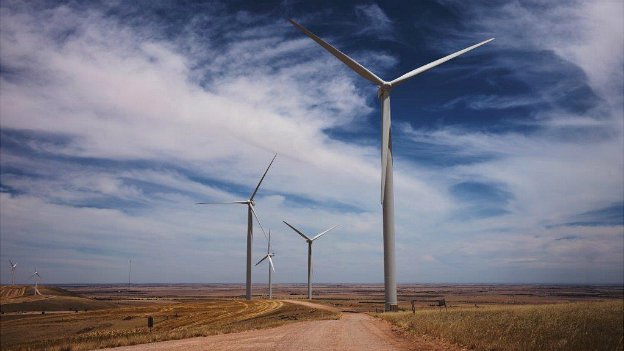The sting of the newly confirmed dive in large-scale renewable energy investment that hit Australia in 2019 could be soothed somewhat with a record number of new solar and wind farms forecast to be completed in 2020.
Industry statistician Rystad Energy on Tuesday said it expected utility wind and solar projects totaling 3.6GW of capacity to complete commissioning this calendar year, up from 2.6GW in 2019.
Of this amount, the majority – 1.96GW – would be made up of PV projects, while 1.57GW would be wind farms, and the remaining 0.1GW battery storage.
The record numbers appear to clash with last week’s data from Bloomberg New Energy Finance, which confirmed a massive 60 per cent slump in investment in big solar and wind in Australia in 2019, attributed in no small part to ongoing policy uncertainty.
As Giles Parkinson noted, the slump – coming just as the country needs to accelerate its clean energy transition – was also blamed on issues including connection delays and transmission losses and overcrowding on certain parts of the grid.
But these same issues might also explain the timing of the forecast boom in projects commissioned – the delayed result of record investment in 2017 and 2018.
“The Australian renewables sector has been through a bit of a quiet spell as few new projects have broken ground in recent months, but we expect the industry to bounce back in the second half of 2020,” said Gero Farruggio, head of Australia at Rystad Energy.
“Projects with power purchase agreements (PPAs) and winners of government auction schemes and grants are scheduled to enter the construction phase, developers will be shifting to more favorable parts of the grid in Victoria, New South Wales and Queensland, and projects are lining up in central and northern New South Wales to replace the coal-fired Liddell power plant that is due to close by April 2023,” he added.
As Rystad points out, this boom also comes despite the fact that the number and capacity of new wind and solar plants set for construction in the third and fourth quarters of 2019 were the lowest of any quarter in the last three years.
“There are now several projects at advanced stages of development with a total capacity of 3.76 GW that have the potential to break ground in 2020, and most are located in desirable parts of the grid, being developed by experienced utility PV developers,” said David Dixon, Rystad’s senior analyst of renewable research.
Four utility solar projects, each with a capacity of 200MW or more, are set to complete commissioning this year, according to Rystad. These include Darlington Point (275MW), Limondale (249MW), Kiamal Stage 1 (200MW) and Sunraysia (200 MW).
Another eight new wind farms are also expected to complete commissioning, with a combined capacity of 1.57GW. These include PARF’s 453MW Coopers Gap, which will become the largest operational wind farm in Australia and only the second large-scale operating wind farm in Queensland.
Dixon says New South Wales will get most of the spoils, with projects totaling 2GW set to be commissioned in that state alone.
“The development pipeline is concentrated in New South Wales, which will be an attractive state for both wind and solar due to it being the highest-demand market in the NEM, along with the planned exit of the Liddell coal-fired power station and the relatively low penetration of renewables in the market at present,” he said.

Sophie is editor of One Step Off The Grid and deputy editor of its sister site, Renew Economy. Sophie has been writing about clean energy for more than a decade.


